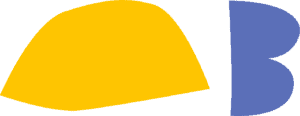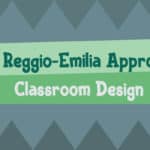The “New” Education Vocabulary
Diving into the world of education can sometimes feel like learning a new language.
From “emotional literacy” to “Culturally Responsive Teaching,” the vocabulary of teaching and learning is ever-expanding, reflecting the dynamic nature of the field. That’s why this friendly glossary has been put together.
Think of it as an educational compass, guiding you through the maze of new terms that are shaping modern education. It’s not just a list of definitions; it’s meant to be a growing resource and a roadmap to related topics across the blog.
While starting with a solid foundation, this glossary is designed to evolve, helping educators, students, and parents alike stay in the loop with the latest educational trends.

#
21st Century Skills: A set of abilities that students need to develop in order to succeed in the information age, such as critical thinking, creativity, collaboration, and communication.
A
Active Learning: A teaching method that engages students in the learning process directly, typically involving activities like reading, writing, discussion, or problem-solving.
Adaptive Learning: A technology-enhanced teaching method that uses algorithms and data to personalize the learning experience for each student, adapting in real time based on their performance and engagement.
Authentic Assessment: Evaluation of students’ skills in real-world contexts, often involving practical tasks that demonstrate the application of their knowledge.
B
Big Idea Curriculum: An educational approach that centers around broad, overarching themes or questions. These ‘big ideas’ are explored in depth, allowing for a more integrated and comprehensive understanding of the subject matter.
Bildung: A German term that has no precise English equivalent, but broadly refers to the holistic development of an individual, encompassing education, personal growth, and moral development.
Blended Learning: A mix of traditional face-to-face teaching and online learning.
Bloom’s Taxonomy: A classification system used to define and distinguish different levels of human cognition—i.e., thinking, learning, and understanding.

C
Child-Centered Learning: A teaching approach that places the child at the center of their own learning. Teachers facilitate an environment where children are given choices, and their thoughts and questions are respected.
Cognitive Load Theory: A concept in educational psychology that deals with the amount of information that working memory can handle at one time, and how instructional design can be optimized to manage this load.
Collaborative Learning: An educational approach involving joint intellectual effort by students or students and teachers together. Usually, students work in groups of two or more, mutually searching for understanding, solutions, or meanings, or creating a product.
Competency-Based Education (CBE): A system of education where students progress based on their ability to demonstrate competency in a skill or a set of skills, rather than on time spent in a course.
Constructivism: A theory of learning that posits that people construct their own understanding and knowledge of the world through experiences and reflecting on those experiences.
Content Integration: The use of content from various cultures and groups to enrich the curriculum and provide students with a broader understanding of the subject matter.
Critical Pedagogy: A teaching philosophy that encourages students to question and challenge power structures and beliefs within society, and to develop a critical consciousness.
Culturally Responsive Teaching: An approach to education that recognizes the importance of including students’ cultural references in all aspects of learning.
D
Deep Learning: Refers to a profound and active engagement with content, resulting in the development of complex understanding and mastery over time.
Design Thinking in Education: A problem-solving approach that encourages students to think like designers, empathizing with users, ideating, prototyping, and iterating solutions.
Differentiated Instruction: A teaching approach that tailors instruction to meet individual needs.
Digital Divide: The gap between those who have ready access to computers and the internet and those who do not.
Digital Literacy: The ability to use information and communication technologies to find, evaluate, create, and communicate information, requiring both cognitive and technical skills.
Documentation: In the context of visible learning, documentation refers to the practice of capturing and displaying the learning process and outcomes. This can include portfolios, learning journals, photos, videos, and displays of student work, providing tangible evidence of growth and learning.

E
Ecoliteracy: The ability to understand the natural systems that make life on Earth possible and how to live sustainably within them.
Emergent Curriculum: A way of planning lessons that are based on the interests and passions of the children in the classroom. Rather than sticking to a rigid curriculum, teachers adapt and change their plans as they observe what the children are curious about.
Read also:
- What is an Emergent Curriculum? Cultivating Children’s Interests with the Reggio Approach
- Is Reggio Emilia the Same as Montessori? A Personal Experience
Emotional Intelligence (EQ): The ability to recognize, understand, and manage our own emotions and to recognize, understand, and influence the emotions of others.
Emotional Literacy: The ability to understand and express feelings. Emotional literacy involves self-awareness and recognition of one’s own feelings and how they affect one’s behavior.
Read also:
Environment as the Third Teacher: A concept from the Reggio Emilia approach that recognizes the environment as a significant contributor to learning. It suggests that the surroundings can inform and shape the children’s development just as a teacher might.
Read also:
- What is the Reggio Emilia Approach? | Intro to Reggio Emilia Teaching for Parents and Teachers
- Reggio Emilia Classroom Design | Intro to Reggio Inspired Learning Spaces
Experiential Learning: A process through which students develop knowledge, skills, and values from direct experiences outside a traditional academic setting.
F
Flipped Classroom: A teaching model that reverses the traditional learning environment by delivering instructional content outside of the classroom, often online.
Formative Assessment: A range of formal and informal assessment procedures conducted by teachers during the learning process to modify teaching and learning activities to improve student attainment.

G
Gamification: The use of game design elements in non-game contexts, such as education, to motivate and enhance student learning and engagement.
Global Citizenship Education: Educating students to become global citizens with an understanding of global issues, a sense of belonging to a common humanity, and the skills and attitudes to effect positive change.
Grit: A term popularized by psychologist Angela Duckworth, referring to a blend of passion and persistence—key to achieving long-term goals.
H
Heutagogy: A form of self-determined learning where the learner is at the center of their own learning, typically involving activities like self-reflection, metacognition, and collaborative learning.
Holistic Education: An approach to teaching and learning that seeks to address multiple aspects of a student’s life, recognizing the interconnectedness of the mind, body, and spirit.
I
Inclusive Education: An education system that works to ensure that all students, regardless of their challenges or differences, are taught in age-appropriate general education classes.
Inquiry-Based Learning: A form of active learning that starts by posing questions, problems or scenarios — rather than simply presenting established facts or portraying a smooth path to knowledge.
Read also:
- How to Incorporate Art into Different Subjects Curriculums
- Creating Art for Social Change: How Art Can Inspire Activism
Instructional Scaffolding: A method of teaching that involves providing support to students as they learn new concepts, gradually removing the support as the students become more proficient.

L
Lateral Thinking: A manner of problem-solving that uses an indirect and creative approach via reasoning that is not immediately obvious. It involves ideas that may not be obtainable by using only traditional step-by-step logic.
Learning Analytics: The measurement, collection, analysis, and reporting of data about learners and their contexts, for the purpose of understanding and optimizing learning and the environments in which it occurs.
Learning Styles: The preferred way an individual processes information. Common learning styles include visual, auditory, and kinesthetic.
Lifelong Learning: The ongoing, voluntary, and self-motivated pursuit of knowledge for personal or professional reasons.
M
Metacognition: Awareness and understanding of one’s own thought processes, often referred to as “thinking about thinking.” It involves self-regulation and reflection on one’s learning.
Mindfulness Education: A method of education that incorporates mindfulness practices to improve the mental, emotional, social, and physical health and well-being of students.
Montessori Method: An educational approach developed by Dr. Maria Montessori that emphasizes independent, hands-on learning and collaborative play.
Read also:
- Reggio Emilia vs Montessori: Differences and Similarities
- What is loose parts play?
- The best loose parts play ideas for toddlers
- Is Reggio Emilia the Same as Montessori? A Personal Experience
Multiliteracy: Expands the traditional notion of literacy to include the many forms of communication and expression that are required to navigate a rapidly changing, culturally diverse, globalized world.

N
Neurodiversity: A concept that acknowledges and respects neurological differences as any other human variation. These differences can include those labeled with Dyspraxia, Dyslexia, Attention Deficit Hyperactivity Disorder, Dyscalculia, Autistic Spectrum, Tourette Syndrome, and others.
P
Pedagogical Content Knowledge (PCK): The blend of content and pedagogy that is unique to teachers; that is, knowing what to teach and how to teach it.
Peer Learning: An educational practice in which students interact with other students to attain educational goals.
Positive Education: An approach to education that blends academic learning with character and well-being, preparing students with life skills such as grit, optimism, resilience, growth mindset, engagement, and mindfulness.
Problem-Based Learning (PBL): A student-centered pedagogy in which students learn about a subject through the experience of solving an open-ended problem.
Project-Based Learning (PBL): A teaching method in which students gain knowledge and skills by working for an extended period to investigate and respond to an authentic, engaging, and complex question, problem, or challenge.
Read also:

R
Reflective Practices in Education: Methods used by individuals (both students and educators) to review, analyze, and evaluate their learning experiences. Reflective practices encourage a deeper understanding of one’s own learning processes, leading to improvements in teaching and learning strategies.
Reggio Emilia Approach: An educational philosophy for early childhood emphasizing the child as capable and resilient, with a strong focus on collaborative learning, interaction with the environment, and teacher partnership in learning.
Further reading:
- What is the Reggio Emilia Approach? | Intro to Reggio Emilia Teaching for Parents and Teachers
- Reggio Emilia Classroom Design | Intro to Reggio Inspired Learning Spaces
- Reggio Emilia vs Montessori: Differences and Similarities
- What is loose parts play?
- What is an Emergent Curriculum? Cultivating Children’s Interests with the Reggio Approach
- Is Reggio Emilia the Same as Montessori? A Personal Experience
Hands-on activities:
Responsive Teaching: A teaching method where educators adapt their strategies and lesson plans based on their observations and interactions with students, responding to their needs, interests, and abilities.
Rubric: A scoring tool that lists the criteria for a piece of work or “what counts.” Rubrics can be used to evaluate a variety of student projects and activities.

S
Social-Emotional Learning (SEL): The process through which children and adults understand and manage emotions, set and achieve positive goals, feel and show empathy for others, establish and maintain positive relationships, and make responsible decisions.
Spiral Curriculum: An approach to education that introduces key concepts to students at a young age and covers these subjects repeatedly, with increasing degrees of complexity.
STEAM Education: An approach to learning that uses Science, Technology, Engineering, the Arts, and Mathematics as access points for guiding student inquiry, dialogue, and critical thinking.
Further reading:
- How to Incorporate Art into Different Subjects Curriculums
- Creating Art for Social Change: How Art Can Inspire Activism
Hands-on activities:
STEM Education: Similar to STEAM, but focuses on Science, Technology, Engineering, and Mathematics.
Student-Centered Learning: An approach to education that places the student at the center of the learning process.
Summative Assessment: An evaluation at the conclusion of a unit or course of study, designed to measure learner competence in a specific area.
Synchronous and Asynchronous Learning: Synchronous learning occurs in real-time, often with a set class schedule and active participation, while asynchronous learning does not require real-time interaction; instead, content is available for students to access at their own pace.
T
Transdisciplinary Learning: A method that transcends traditional disciplinary boundaries to promote holistic learning. It involves integrating the perspectives of multiple disciplines to address a single topic or problem.

U
Universal Design for Learning (UDL): An educational framework that guides the development of flexible learning environments and learning spaces that can accommodate individual learning differences.
V
Vygotsky’s Zone of Proximal Development: A concept that refers to the difference between what a learner can do without help and what they can do with help.
Visible Learning: A teaching and learning approach where the process of learning is made explicit and observable to students, teachers, and the broader school community. It emphasizes the transparency of learning objectives, methods, and outcomes, facilitating a deeper understanding and engagement in the educational journey.
W
Waldorf Education: A humanistic approach to pedagogy based on the educational philosophy of the Austrian philosopher Rudolf Steiner, the founder of anthroposophy.
Whole Child Education: An approach that strives to address the comprehensive needs of children, ensuring each child is healthy, safe, engaged, supported, and challenged.











